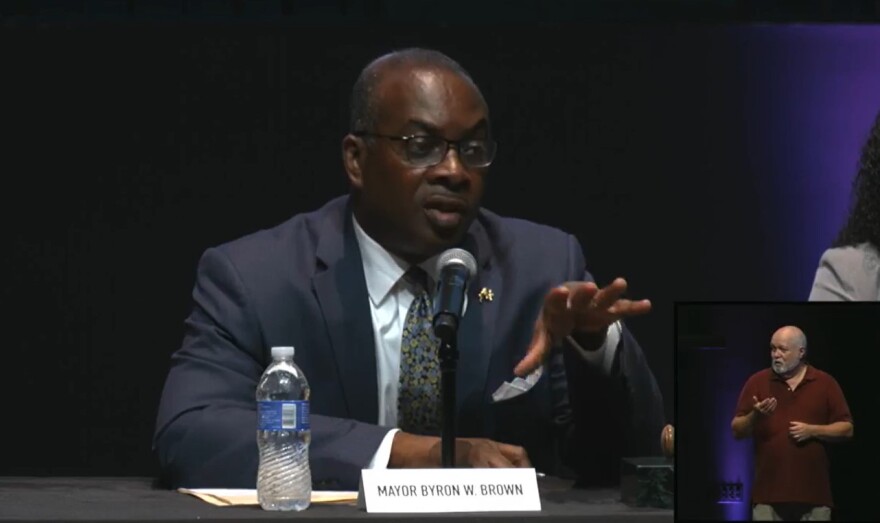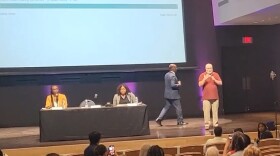Buffalo Mayor Byron Brown has signed the Common Council’s controversial new district map into law, despite outcry from community members and a recent contentious public hearing.
Brown’s office said in a statement late Monday afternoon that the Council and the Citizens Commission on Reapportionment met all legal requirements set forth by the city charter when drawing the map.
The map, approved by the Council July 19, has been accused of being gerrymandered in order to protect current incumbent Council members.
Lawyer Adam Bojak represents Our City Action Buffalo, an activist group that has been leading the fight against the Council’s map and has proposed an alternative map with visibly different lines.
Bojak said on WBFO’s “Buffalo, What’s Next?” program earlier this month that legal action was “in the works” if Brown approved the Council’s map, and confirmed Monday that a lawsuit will be filed soon. However, no decision has been made yet on whether it will be in New York state or federal court.
“We're definitely just kind of feeling it out, and as we saw with the Republicans' lawsuit against the state maps earlier this year, choosing your venue properly can definitely affect the outcome,” he said. “So, we're going to be very, very sure before we file that we've made the right decision.”
The lawsuit won’t just be against the city — it will also be against the Erie County Board of Elections, Bojak added.
“They are the ones that use it and enforce it,” Bojak explained. “And they would be a party to that lawsuit, as well, whether they like it or not. It's just the nature of the beast at the Board of Elections.”

The redistricting process has led to several contentious public hearings in which the overwhelming majority of speakers criticized the Council map, including one held by Brown Aug. 3 at the Burchfield Penney Art Center. During that hearing, Brown momentarily walked off the stage after getting into a shouting match with a city resident who spoke from the audience and refused to use the microphone.
Monday’s statement said the mayor reviewed all 200 comments submitted online and listened to all 26 speakers at the Aug. 3 public hearing, but that the comments represented less than one-tenth of a percentage of the city’s total population and therefore the comments “do not represent a ‘significant’ amount of Buffalo’s Population.”
“There was not overwhelming opposition as erroneously described by some,” the statement read.
However, Bojak said the process of the Reapportionment Commission obscured what was going on and that meant his clients entered the fight late.
“Unfortunately, I don't think the process is ever going to stop for the people, in this instance,” he said. “I don't think the Common Council is ever going to truly slow down and listen to public input.”
Brown also pushed back against criticism that the Council’s map decreases minority voting power, saying the Council’s map has seven majority minority districts, compared to just six in the alternative map by Our City Action Buffalo.
“Any claim that the Council’s map reduces the likelihood of minority voting power or weakens voting rights is absolutely false,” the statement read.
Proponents of the Our City Action Buffalo map have argued it will give Black voters strong voting power in four of the nine Council districts, compared to just three in the Council’s map. The alternative map would also eliminate the Fillmore District and create an Elmwood-Allentown District.
All of the new districts will be on the ballot next year. Several of the most vocal opponents of the Council’s map are known to be considering running against some of the current Council members. Incumbents are considered most vulnerable when they are running in new districts with constituents who don’t know them well.
Brown’s office said the map will now be transmitted to the Erie County and New York State Board of Elections.














